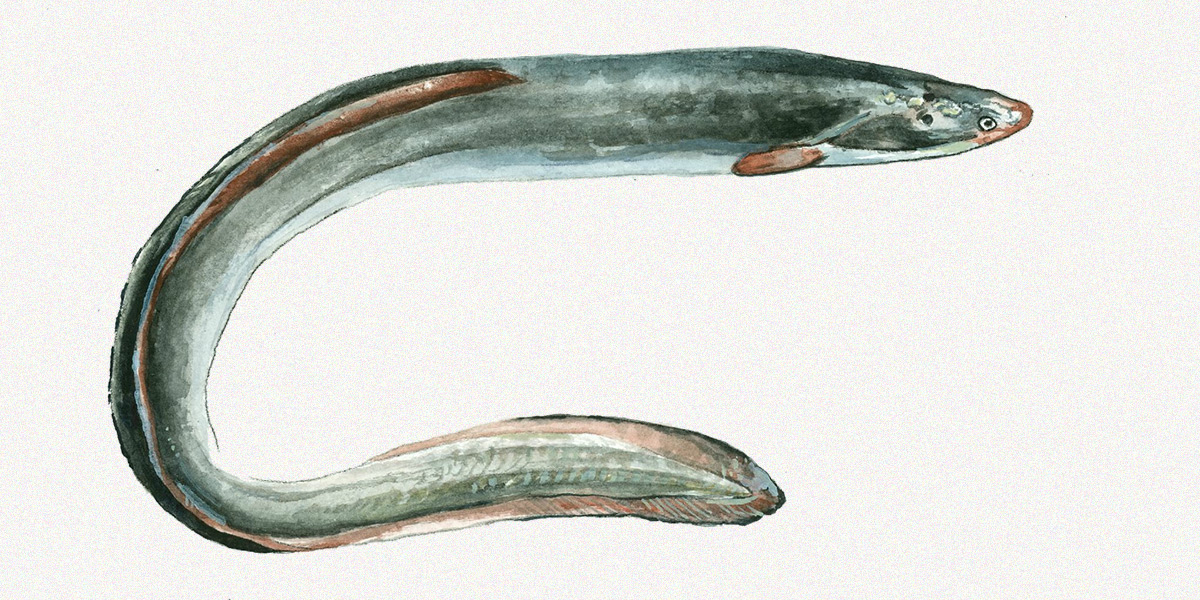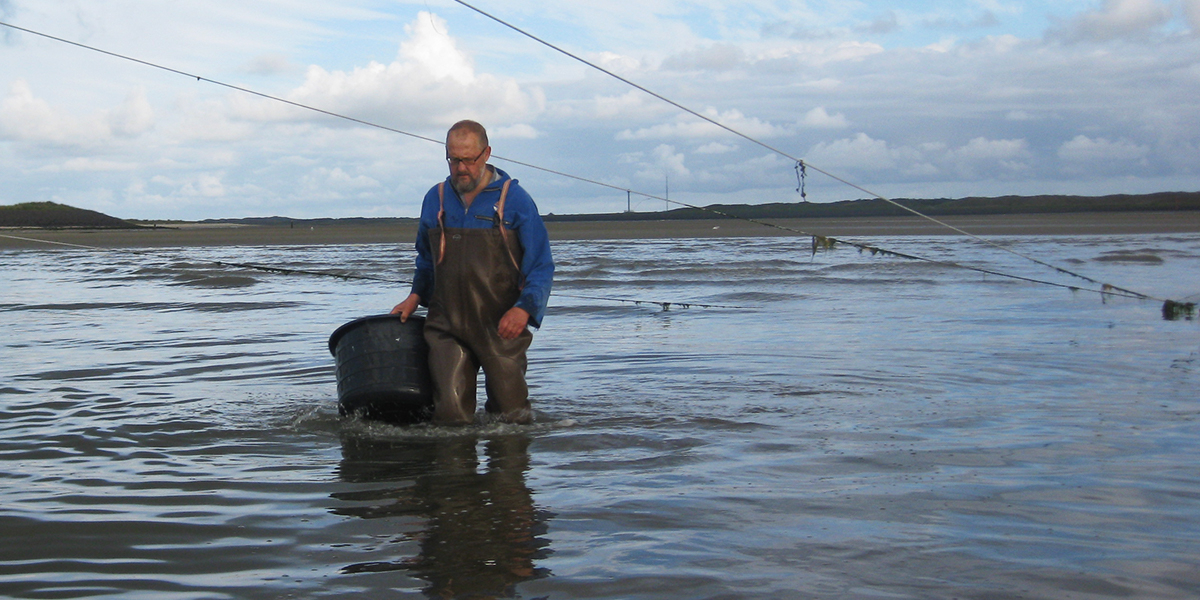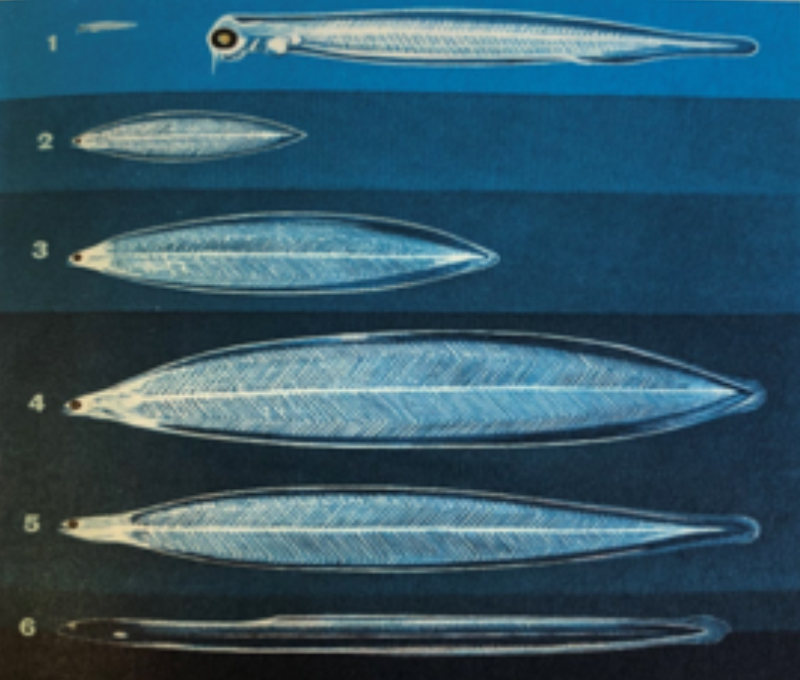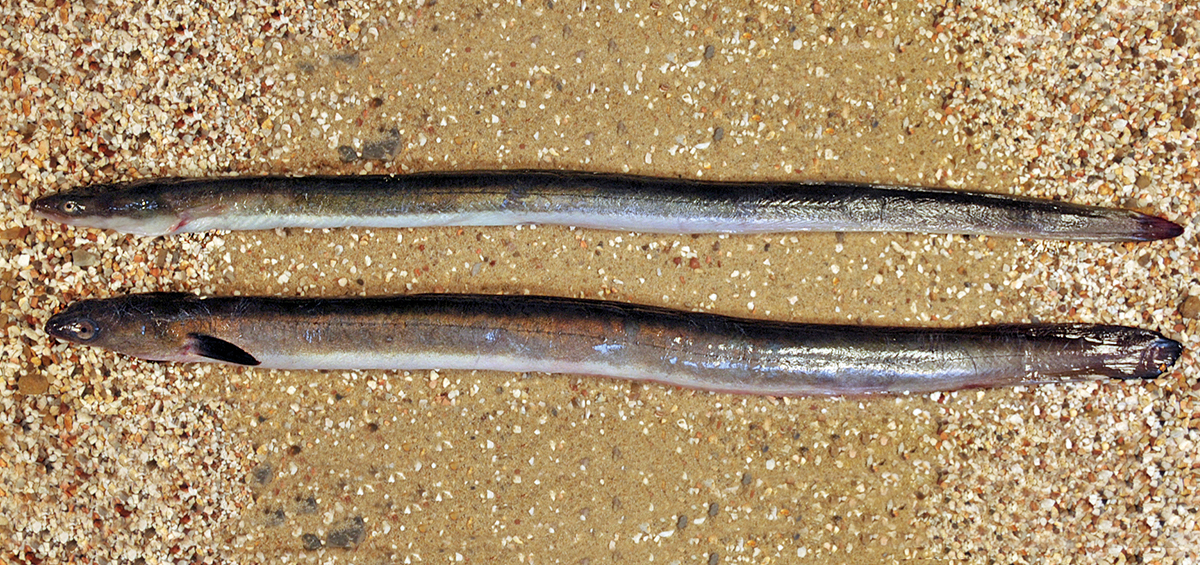Eel

Mysterious fish
One of the most mysterious fish we have in Europe is the eel. In autumn when the grass is covered in morning dew you can sometimes see an eel in the meadow, wriggling its way from one ditch to another. You might mistake it for a snake instead of a fish, especially the adult female eels, which can measure about 1 metre in length. These eels are on their way from fresh water to their spawning grounds in the Sargasso Sea of the west Atlantic. We now know from tagged fish that they actually travel to the deep-sea of the western Atlantic.
After spawning they die
On this 6000 km long journey they use a part of the fat they have stored in their body, since their intestines have disappeared and they can no longer eat. They use the remaining fat to build up their gonads. After spawning they die, possibly because they have used all their fat reserves. It is worth mentioning that a spawning eel has never been found, but young larvae have been found in the Sargasso Sea. These Leptocephalus larvae look completely different from the adult eel. They live in the upper layers and look like small leaves. They drift to the east Atlantic eating small particles, and grow to about 10 cm in length. Having arrived at the European coast their small translucent bodies change shape and become short translucent eels. They then enter fresh water, mostly by swimming up the rivers. After 6-10 years they will return to their spawning grounds and so the cycle is completed.
Low eel stocks
Due to overfishing, pollution of fresh water and obstacles to reach fresh or seawater, nowadays the eel stocks are low. Measures are being taken to help the eel stocks thrive again; let’s hope this wonderful, mysterious and tasty fish species will return to the place where it belongs: an abundant fish that everybody recognises by its taste and its strange life cycle.


